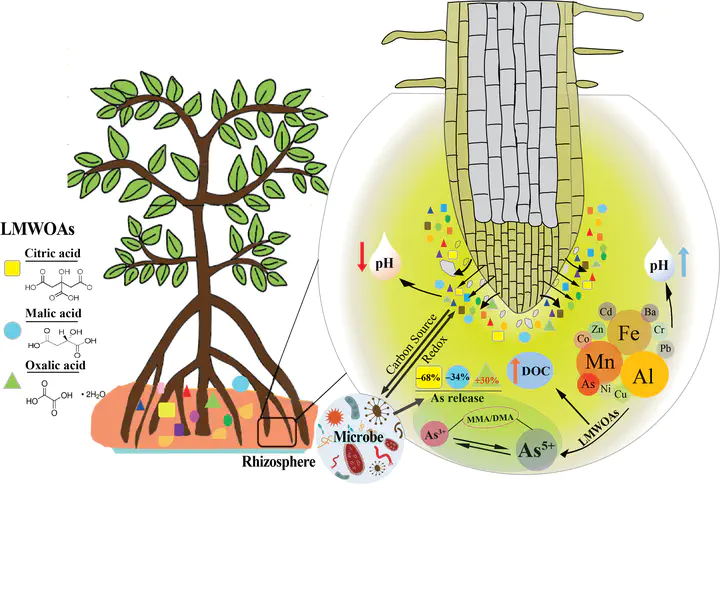3. Dynamics of low-molecular-weight organic acids for the extraction and sequestration of arsenic species and heavy metals using mangrove sediments

Abstract
Mangrove wetlands are subjected to pollution due to anthropogenic activities. Mangrove fitness is mainly determined by root exudates and microorganisms activities belowground, but the mechanisms are not yet well known. Rhizospheric interactions among mangrove sediments, microorganisms and root exudates were simulated. In particular, low-molecular-weight organic acids (LMWOA), were examined to explore the metal(loid)s rhizospheric dynamics via batch experiments. Using a combination of comparative sterilised and unsterilised sediments, LMWOA extracts and sediments constituents were examined. Factors such as the solution pH, dissolved organic carbon (DOC), arsenic and iron species and metal(loid)s in the aqueous phase were evaluated. The results show that on an average, the As decreased by 68.3 % and 42.1 % under citric and malic acid treatments, respectively, after sterilisation. In contrast, the As content increased by 29.6 % under oxalic acid treatment. Microorganisms probably facilitate sediment As release in the presence of citric and malic acids but suppress As mobilisation in the presence of oxalic acid. Fe, Mn and Al were significantly (p < 0.05) positively correlated with the trace metal(loid)s (Zn, Pb, Ni, Cu, Cr, Co, Ba, Cd and As). The solution pH was negatively correlated with the solution As. Both DOC and pH reach the peaks at the end of all treatments. The As absorption–desorption dynamics are closely linked to proton consumption, Fe-Mn-Al sedimentation of ageing performance and organic ligand complexation. The study provides an insight into the rhizospheric processes of microbial involvement and gives an enlightening understanding of the metal(loid)s redeployment for plant adaptation in mangrove wetlands.